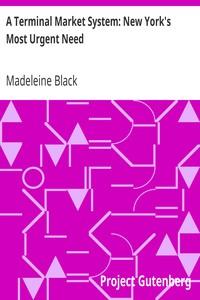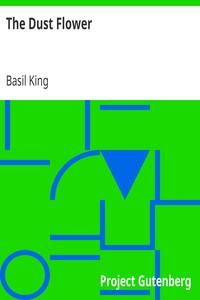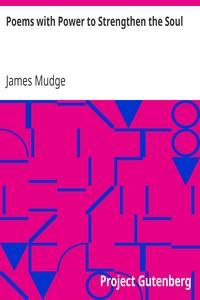Read this ebook for free! No credit card needed, absolutely nothing to pay.
Words: 15800 in 4 pages
This is an ebook sharing website. You can read the uploaded ebooks for free here. No credit cards needed, nothing to pay. If you want to own a digital copy of the ebook, or want to read offline with your favorite ebook-reader, then you can choose to buy and download the ebook.


: The Negrito and Allied Types in the Philippines and The Ilongot or Ibilao of Luzon by Barrows David P - Ethnology Philippines; Negritos
type varying all the way to primitive Malayan. Three men whom I measured had a stature exceeding the Negrito but in other respects were Negritic. The statures were 1583, 1594, and 1612; the cephalic indices, 80, 85, and 86; the nasal indices, 97, 102, and 111.
What has not been generally noted, however, is the fact that nearly all the peoples of eastern Mindanao, usually described as "Malayan" or "Indonesian," are to a large degree Negrito. This is especially true of the Manobo of the lower waters of the river Agusan. I have no measurements of these people, but the appearance of nearly every individual in their communities is Negritic rather than Malayan. The stature is very low and frail, hair black and wavy to frizzly, features negroid, and behavior that of the pacified Negrito. Similar characters, though in a less marked degree, display themselves among the tribes southward and about the gulf of Davao. There is no doubt that there is a large amount of absorbed Negrito stock in the pagan peoples of all this great island. Even among the Subanon of the Samboanga peninsula, who are perhaps as purely Malayan as any, I have seen occasional individuals with marked Negrito characters.
I shall not attempt here to estimate the proportion of Negrito blood in the Christian peoples of the Philippines--Bisaya, Bikol, Tagalog, Ilokano, etc.--further than to express my conviction that in certain regions it is very large and has greatly modified the primitive Malayan type. But let us turn to the consideration of possible Negrito blood in two interesting pagan stocks of northern Luzon, the "Igorot" and the "Ilongot" or "Ibilao."
The term Igorot is used to include all the wild, headhunting, mountain-dwelling peoples of the great cordillera of Luzon, a region some two hundred miles in length by forty across. This mountain area is divisible into regions wherein the culture, physical type, and language of the inhabitants are homogeneous or nearly so. These regions, in reports made some years ago on the wild tribes of the Philippines, I have called "culture areas," and they may serve, in the absence of the tribal relation, as the basis of classification. Beginning with the southern end of this mountain system we have the area of southern Benguet and Kayapa inhabited by Igorot speaking a dialect called "Nabaloi." In northern Benguet, Amburayan, and southern Lepanto are the "Kankanay." In the central mountain region, a great area with several subdivisions, the "Bontok"; and southeast, occupying the former Comandancia of Kiangan, the "Ifugao." North of Bontok are the "Tinglayan," the "Tinggian" or "Itnig," the "Kalinga," and "Apayao" areas, and perhaps others. Of these most northerly peoples I have no anthropometric data. Their general appearance is somewhat different from that of the Igorot farther south. They appear to the eye to be more slender and handsomely built, with finer features, especially in the case of the Tinggian. I am of opinion, however, that these dissimilarities are apparent rather than real, and that measurements and careful observation will demonstrate unity of physical type throughout the entire cordillera. This unity does not refer of course to manner of dressing the hair, ornamentation, artificial deformations, etc., in which there is wide variation. The ethnological origin of these Igorot peoples is at first very puzzling. They are obviously not typical Malayans. Some physical measurements which I have should, and I believe do, throw some light on the problem.
Height Arm-reach Cephalic Index Nasal Index
Of these statures all but one are "short," or below 1600. In fact these men are only a little above the average stature of the Negritos of Mariveles . Five are within 50 mm. of a true pygmy stature. The mean stature is 1500 to 1512, and the average is identical, 1505.7. In all but one case the arm reach exceeds the height, the excess varying from 8 to 36 mm. Six are brachycephalic, and four mesaticephalic, the variation extending from 75.7 to 96.3. The nasal index shows wide variation from 75 to 105, the mean being about 85. Four are platyrhinian, two exceeding 100, two are mesorhinian, and four are midway between Topinard's mesorhinian and platyrhinian types. The muscular development of these men is very strong, robust, or "stocky." The skin color is coffee brown with saffron undertone, lighter on trunk. Their hair is coarse and in nearly every case straight, in one case only being slightly wavy. The hair is usually scant on the body and about the face, but two men have relatively hairy bodies and legs. The eye in some cases appears to be oblique. The ear in every case is attached and normal. The chin is retreating and in one case the face is somewhat prognathic. The lips are thick and the under lip heavy. In several cases the supraorbital arches are prominent.
On September 29th of the same year, at Wagan, a small town in Kayapa, I measured fifteen Igorot of that town and of Losod. Eight were women and seven were men. The measurements and indices of these follow:
Stature Arm-reach Cephalic Index Nasal Index
Men 1413 1478 78.7 125.0 1493 1539 80.4 86.4 1512 1544 82.7 84.0 1550 1600 78.9 90.7 1589 1650 73.2 90.9 1594 1650 78.8 100.0 1653 1672 74.6 140.0
Women 1351 1376 85.1 92.6 1367 1394 76.7 92.7 1423 1467 79.1 100.0 1433 1466 76.8 105.7 1435 1455 84.8 125.3 1435 1522 82.6 100.0 1442 1446 84.6 100.0 1509 1520 74.4 100.0
The mean stature and the average were a little higher than in Benguet. In every case the arm-reach exceeded the height. The shape of head in men and women shows a wide variation. Seven are brachycephalic and seven are mesaticephalic while one is dolichocephalic . The nasal index varies from 84 to 140--a truly astonishing series of noses! All are platyrhinian except two, and nine of the sixteen have indices of 100 or over. The descriptive characters were much the same as for the Benguet group. There was occasional marked supraorbital development, retreating chin, and prognathism.
Two of the men deserve special remark. One was the very small fellow--a true pigmy . He was named "Mokyao" and was born in Wagan. He suggested the Negrito in stature, in arm-reach , in nasal index , and in the slightly wavy quality of his hair. His head, however, was mesaticephalic .
Free books android app tbrJar TBR JAR Read Free books online gutenberg
More posts by @FreeBooks

: A Terminal Market System: New York's Most Urgent Need Some Observations Comments and Comparisons of European Markets by Black Madeleine - Markets; Markets New York (State) New York








